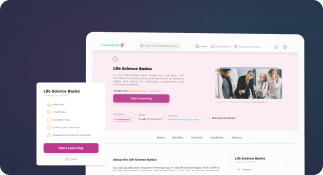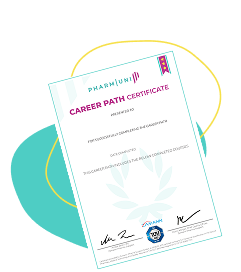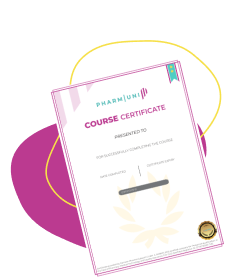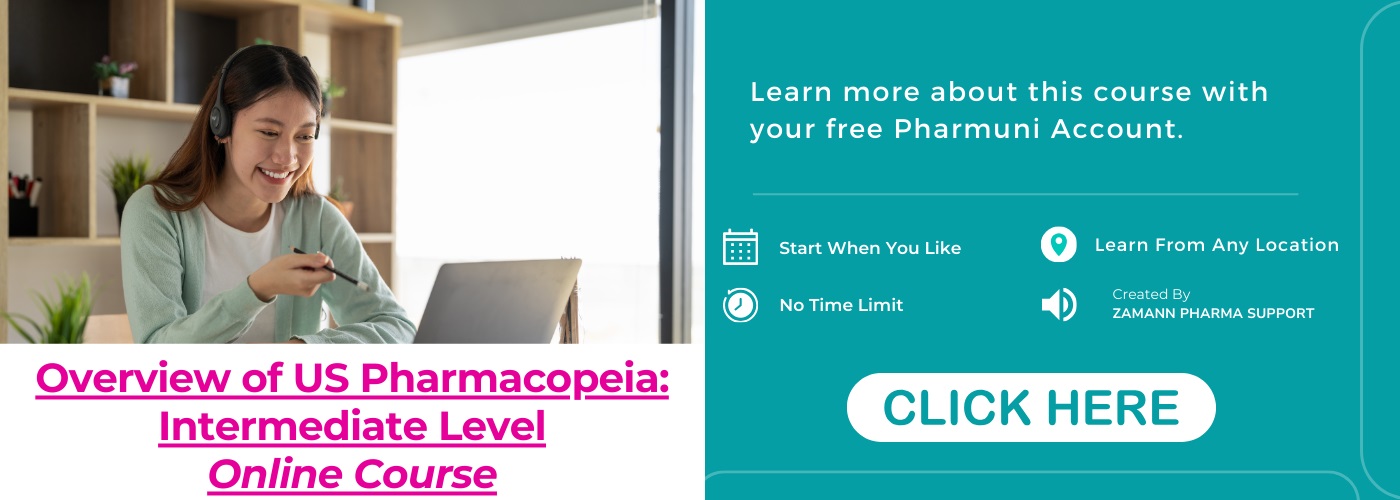Pharmaceutical standards are essential for ensuring product quality, safety, and efficacy. The US Pharmacopeia (USP) plays a critical role in establishing these standards. By providing guidance through its general chapters, USP supports the pharmaceutical industry in maintaining regulatory compliance and fostering innovation.
In this article, we’ll explore the significance of USP, delve into its general chapter categories, and highlight how Good Pharmacovigilance practices align with these standards.

What Is the US Pharmacopeia?
The US Pharmacopeia (USP) develops quality standards for medicines, dietary supplements, and food ingredients. Founded in 1820, USP has earned recognition as a trusted authority in pharmaceutical regulations worldwide.
Regulatory agencies enforce these standards to ensure products meet strict safety and quality requirements. USP standards help manufacturers maintain consistent quality, which protects consumers and boosts confidence in the pharmaceutical industry. By offering clear guidelines, USP supports global efforts to uphold product integrity and public health.
USP general chapters outline essential practices for analytical procedures, manufacturing processes, and product testing. These chapters organize guidelines into specific categories, making them accessible to manufacturers. Understanding and applying these categories is crucial for achieving Good Pharmacovigilance practices. By following these standards, manufacturers ensure that products remain safe and effective throughout their lifecycle. USP’s influence extends across global markets, helping companies build trust with regulators and consumers.
Sign up for Overview of US Pharmacopeia: Intermediate Level Course
What Are US Pharmacopeia General Chapters?
USP general chapters organize standards into specific categories to ensure clarity and functionality. These chapters are divided into:
These chapters contain procedures essential for demonstrating compliance with regulatory specifications. They often apply across multiple monographs and help avoid duplication. For instance, acceptance criteria may either appear within the chapter or reference specific monographs. Regulatory agencies, including the FDA, rely on these chapters to ensure consistency.
These chapters provide guidance rather than enforceable rules. While not mandatory, some countries may enforce them, and the FDA may require them at its discretion. Informational chapters aim to provide context for required standards and remain devoid of acceptance criteria to minimize confusion.
These chapters address unique standards relevant to dietary supplements.
Understanding these categories is vital for manufacturers to ensure compliance and align with global expectations.
Importance of Required Chapters
Clear Standards for Compliance
Required chapters in the US Pharmacopeia provide essential and enforceable standards for the pharmaceutical industry. These chapters outline testing methods that manufacturers follow to ensure product safety and quality. By offering clear guidelines, they help companies avoid errors and maintain consistency in production. Additionally, required chapters establish acceptance criteria, which define the limits for product performance. These criteria ensure that medicines and ingredients meet regulatory expectations and industry standards. Furthermore, they include detailed documentation procedures, helping manufacturers maintain accurate records. This structure allows for better traceability and simplifies regulatory audits. As a result, required chapters create a strong framework for maintaining quality across all pharmaceutical products.
The US Pharmacopeia uses required chapters to ensure uniformity across the industry. When companies follow these standards, they streamline compliance with national and international regulations. These chapters also help manufacturers identify deviations during production, enabling timely corrective actions.


Avoiding Redundancy
By consolidating methods into central chapters, the US Pharmacopeia eliminates duplication across monographs. This approach organizes testing procedures in a single location, which simplifies reference for manufacturers. When methods are centralized, companies save time and reduce errors during quality checks. Additionally, this structure prevents inconsistencies between monographs that could create confusion or delays. Manufacturers benefit from having one authoritative source for essential procedures and guidelines. Furthermore, centralized chapters streamline training by providing a unified standard for employees to follow. As a result, this method improves efficiency and enhances the overall reliability of pharmaceutical processes.
The US Pharmacopeia’s centralized structure simplifies updates and ensures consistent application of standards. When new technologies or regulations emerge, updating a single chapter ensures alignment across all monographs. This approach minimizes disruptions and ensures uniform implementation throughout the industry. Manufacturers can quickly adapt to changes without reviewing multiple documents for conflicting updates.
Benefits of US Pharmacopeia Standards
Adopting USP standards provides significant benefits for pharmaceutical manufacturers
Regulatory Compliance
Clear guidelines help manufacturers identify and address potential risks.
Global Harmonization
USP facilitates international trade by aligning global quality standards.
Consumer Trust
Consistent quality builds confidence among consumers and regulators.
Innovation Encouragement
Informational chapters inspire the adoption of new technologies and practices.
Informational Chapters and Their Role
Supporting Industry Trends
USP informational chapters often focus on new technologies and methodologies to keep manufacturers competitive. These chapters provide guidance on emerging trends that improve efficiency and quality in production. For instance, they explore advancements in analytical techniques that streamline testing and reduce costs. They also address updated microbiological protocols, which help ensure sterility and prevent contamination. By following these chapters, manufacturers can adopt modern methods that align with global industry standards. This forward-looking approach helps companies improve their processes and maintain compliance with evolving regulations. Additionally, these chapters encourage innovation by highlighting opportunities to integrate cutting-edge technology into pharmaceutical operations.
Manufacturers benefit significantly from the practical guidance offered in USP’s forward-looking chapters. For example, advanced analytical methods improve the precision of testing and enhance product reliability. Updated microbiological protocols reduce risks and ensure safer outcomes for patients and consumers. These chapters also support manufacturers in identifying areas where they can optimize production.

Promoting Best Practices
Informational chapters in the US Pharmacopeia encourage manufacturers to adopt best practices in their processes. These chapters provide valuable insights that improve product quality and operational efficiency. For example, they guide companies in optimizing manufacturing techniques to reduce errors and waste. By following these recommendations, manufacturers can enhance consistency in production and ensure better outcomes. Additionally, the chapters promote the use of advanced technologies that streamline testing and analysis. This forward-looking approach not only saves time but also improves the accuracy of quality control. Ultimately, the practical guidance in these chapters supports the production of safer, more effective pharmaceutical products.
These chapters also serve as a vital resource for continuous improvement in manufacturing. By addressing emerging challenges, they help companies stay ahead in a competitive industry. Manufacturers can refine their operations based on the latest methodologies outlined in these chapters.
The Vision for US Pharmacopeia General Chapters
The US Pharmacopeia envisions its general chapters as practical, clear, and relevant tools. Required chapters aim to simplify processes by focusing on current technologies and clear acceptance criteria. These chapters ensure manufacturers can execute procedures easily without facing unnecessary complexities. Additionally, they reduce ambiguity, providing straightforward guidelines for compliance and quality assurance. By adhering to required chapters, companies maintain consistency across operations and meet regulatory standards efficiently. This focus on practicality ensures manufacturers can implement standards seamlessly, enhancing reliability and trust in pharmaceutical products.
Informational chapters in the US Pharmacopeia provide forward-looking guidance to address industry challenges. These chapters promote innovation by encouraging the adoption of emerging technologies and methodologies. For instance, they explore trends that improve efficiency while ensuring alignment with regulatory requirements. Informational chapters also help manufacturers stay competitive by addressing evolving market needs and expectations. Furthermore, these guidelines inspire companies to refine their processes and improve product quality continuously. By fostering a proactive approach, the US Pharmacopeia ensures its standards remain relevant and effective.
Conclusion
The US Pharmacopeia serves as a vital resource for the pharmaceutical industry. Its general chapters provide the framework for maintaining safety, efficacy, and compliance. By following these guidelines, manufacturers build trust with regulators and consumers, protect public health, and drive innovation. As the pharmaceutical industry evolves, USP will continue to play a leading role in advancing global standards and fostering a culture of quality.
References

Ershad Moradi
Ershad Moradi, a Content Marketing Specialist at Zamann Pharma Support, brings 6 years of experience in the pharmaceutical industry. Specializing in pharmaceutical and medical technologies, Ershad is currently focused on expanding his knowledge in marketing and improving communication in the field. Outside of work, Ershad enjoys reading and attending industry related networks to stay up-to-date on the latest advancements. With a passion for continuous learning and growth, Ershad is always looking for new opportunities to enhance his skills and contribute to pharmaceutical industry. Connect with Ershad on Facebook for more information.

Pharma Management Courses: Managing GMP, Compliance, and Cross-Functional Teams (2025)
Pharma management courses are designed to equip professionals with essential leadership skills in GMP, compliance, and cross-functional team coordination. These courses help individuals manage regulatory challenges, reduce audit failures, and ensure product quality, making them crucial for career advancement in the pharmaceutical industry.

Pharma Industrial Training Certificate: Career Outcomes, Jobs, and ROI (2025)
A Pharma Industrial Training Certificate can significantly enhance your career in the pharmaceutical industry. This certificate equips you with hands-on experience in Good Manufacturing Practices (GMP), documentation, and manufacturing processes—skills that are directly applicable in various pharmaceutical roles.

Certificate in Pharmaceutical Manufacturing: Complete Career Guide (2025)
A Certificate in Pharmaceutical Manufacturing gives you a fast, structured way into GMP-based production roles. You learn core topics such as GMP rules, manufacturing processes, documentation, and QA/QC. In 6–12 months, you move from theory to shop-floor skills and boost your chances of landing a stable pharma job.




